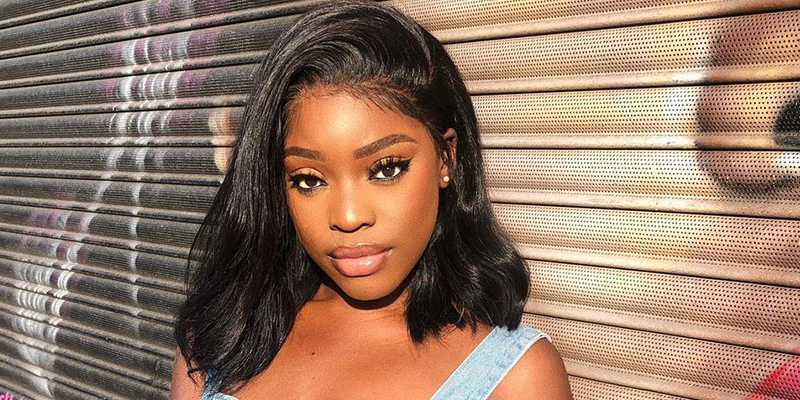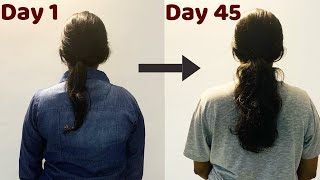Thickness Does Not Come ‘Naturally’ For All Of Us
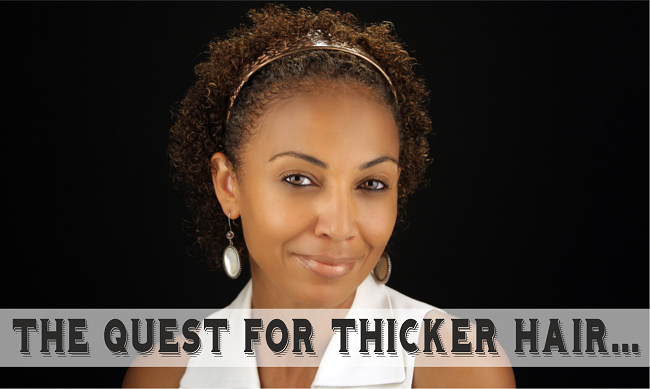
Anywhere you look whether TV, movies or the internet you will find models, actresses, and musicians with big, thick, beautiful hair. The need to have youthful, voluminous hair is contagious which can make a woman with thin hair feel inferior or left out.
I know this because I’m a woman with thin hair and looking for fullness or big hair is a quest I find myself on daily. Some of us weren’t even lucky as children to have thick gorgeous hair so this quest that many of us find ourselves on has been a life-long one.
FYI – When I refer to ‘thin hair’ here I mean low density hair rather than the width of individual strands.
The Debate
Honestly, it depends on who you ask if you can make your hair do what nature or DNA wasn’t able to do…thicken it. There are many manufacturers out there who claim that their products will do just that (and more) and sometimes I wonder if I’m not being sold some magic beans when I go to the hair isle.
Not everyone who claims to have solutions for thickening hair is being untruthful yet the reality of the matter is that hair densities range from low density, medium density and high density and not much can change what you naturally have.
Most women (who don’t have it) want thick hair. It looks better, healthier and with all the models, actresses and musicians sporting wigs*, weaves* and pieces for fullness it’s no surprise most of us want it too. Some of us have it naturally but others do not and try as you might, making your hair thicker or denser, I’m sorry to say, is NOT something you can actually do.
Of course there are things that you can do to give your hair the appearance of being thicker or fuller which we will look at shortly.
Hair Density vs. Hair Width
Hair density is not the same as hair width (measures the width of individual strands of hair) which is also called our hair’s texture. There are three types of Hair widths:
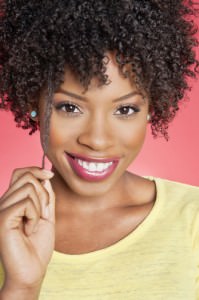 Fine – The most delicate and the most easily damaged. Many black women have this type of hair width.
Fine – The most delicate and the most easily damaged. Many black women have this type of hair width.
Medium – More resistant to damage as they are stronger and more elastic but they can still be prone to damage.
Coarse – This is the strongest of hair textures with a very wide in circumference which is the most resistant to damage.
Knowing your hair’s width or texture is necessary because it affects your ability to retain length. Hair density doesn’t get as much discussion within the natural hair community as much as hair length, porosity or texture but it’s no less important.
Understanding and knowing your hair’s density can give more insight into how to take care of your hair and which products will work best for you.
The density of your hair has NOTHING to do with the thickness of each individual strand. The number of hairs within a specific area (usually a square inch) determines your hair’s density and the average person has about 2,200 hairs within a square inch.
There are three types of hair density: Low, Medium and High. Now the most accurate way to determine your hair’s density is having someone count the hairs within a square inch on your head but there is a much easier way to find out.
Start with dry hair, because hair that’s wet will often look thinner than it really is. Let your hair hang loose in its natural, unparted shape and look at it closely from all different angles. If you can see your scalp very easily, then you have low hair density. If you can see some of your scalp, you have medium hair density. If your scalp is difficult or impossible to see, then you have high hair density. Naturallycurly.com
I’m not sure how accurate this method of testing would be for those with afro hair types because the evolutionary purpose of afro hair appears to be to protect our heads from the sun despite the fact that we have the lowest density hair type. Essentially most afro texture hair in it’s natural state would appear high density even when it’s not. Perhaps a more accurate way to check density of afro hair would be in it’s stretched state.
In a nutshell, we cannot grow hair where it has never grown before so increasing hair density is virtually impossible. If you have had low density hair all of your life you cannot find a product or DO something that is going to miraculously make more hair appears within a square inch of your scalp.
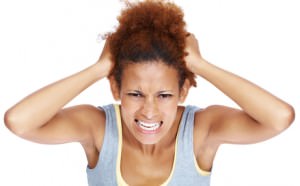 I’m not saying that thinning hair due to illness or damaging techniques cannot regrow. I’m saying that if you had thin hair all of your life you will continue to have thin hair and vice versa for the thick haired naturals (unless they damage it and it starts to thin).
I’m not saying that thinning hair due to illness or damaging techniques cannot regrow. I’m saying that if you had thin hair all of your life you will continue to have thin hair and vice versa for the thick haired naturals (unless they damage it and it starts to thin).
This is all outside of growing older since most women as they approach menopause may have to deal with some thinning of the hair.
Got The Facts, So Now What?
Well, despite what your parents gave you, a natural can create the appearance of having thicker hair and in more than one way. Here are a few:
Give your hair a boost – Many naturals have experienced thinning hair from chemically relaxing, coloring, illnesses or just hormones. Since you’ve had that hair in the past you can regain it by doing protein treatments and taking multi-vitamins* or hair vitamins* or even rubbing some castor oil* to the thinning areas. I’m currently doing this by doing a protein treatment once a month and taking Hairfinity* and the thickness I had during my younger years is coming back.
Layering your hair – Layers always gives hair the appearance of looking fuller and it’s not just for relaxed women. Many naturals have layered haircuts but remember to find a stylist that knows how to cut natural hair.
Embrace the shrinkage – Stretched hair looks thinner than curly/coily/kinky* hair. I know it’s a pain and shrinkage doesn’t allow you to show your length but embracing at least some shrinkage gives the appearance of bigger fuller hair so enjoy it and give the illusion that your hair is thicker than it really is.
Avoid straight hair – Avoid for two reasons. Straight hair is flat and looks much thinner than your coils and kinks. Additionally, you run the risk of heat damage by straightening with heat often and that damage can actually cause thinning hair.
Style on dry hair – This means fluffing your hair when it’s dry after you have styled it which will give your hair the appearance of looking fuller. Add a few sprays from your spray bottle to give a little frizz for even more fullness. Hey, frizz can come in handy when it comes to big hair! See this post on how to get more volume from your flat twist outs.
Stay away from sulfates and silicones – These ingredients tend to dry out our hair robbing it of it’s natural oils*. Dry hair breaks and broken hair is thinning hair. Silicones will also weigh down the hair since they are not water-soluble and give you a flat look which makes your hair appear thinner.
So, what’s your technique for adding fullness to your hair or do you feel there are products out there that really do add fullness or thicken the hair?

